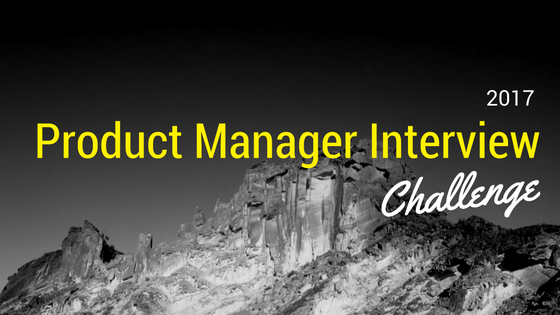Salary negotiation can seem like a big, scary topic. Most people know they should negotiate their starting salary, but because it's a big, scary topic, they often just throw their hands up and accept the job offer. Or maybe they make a half-hearted attempt at a counter offer and back down immediately if the company pushes back.
A great way to manage big, scary situations is to follow a process. A good process gives you small steps to take so you make progress a little bit at a time without feeling overwhelmed. So here's a process you can use to negotiate your salary without feeling overwhelmed.
Keep your current and desired salary to yourself
The first step in the salary negotiation process usually comes up early in the job interview process, so it might catch you off guard. I call it The Dreaded Salary Question, and it might sound familiar:
“So where are you right now in terms of salary, and what are you looking for if you make this move?"
Don't disclose your current or desired salary in your job interview or salary negotiation.
Later on, you hope to get a job offer. And you want that offer to be as strong as possible, reflecting the value you'll bring to the company if you get the position. Throughout the interview process, you'll continually demonstrate that you'll be an asset to their team, and you want your job offer to reflect that.
When you disclose your current and desired salary, it's more likely that your eventual job offer will reflect those numbers rather than the value you bring to the role.
So how do respond when asked for your current or desired salary? Try this:
"I’m not comfortable sharing my current salary. I would prefer to focus on the value I can add to this company rather than what I’m paid at my current job. I don’t have a specific number in mind for a desired salary, and you know better than I do what value my skillset and experience could bring to your company. I want this move to be a big step forward for me in terms of both responsibility and compensation."
Set your "walk away" number before you get a job offer
Your minimum acceptable salary is your "walk away" number—your line in the sand for the minimum salary you will accept if you take the job.
This number—your minimum acceptable salary—is how you guarantee that your salary negotiation will have a positive result. You will either exceed this number and take the job, or you will walk away from the opportunity satisfied that it wasn't a good fit.
Ask for time to think it over
The first thing you should do when you finally get a job offer is to ask for time to consider it. This will give you time to objectively consider the job offer, compare it to your minimum acceptable salary from earlier, and calculate your counter offer.
Here's one way to ask for a couple days to thin it over:
"Thanks so much for the offer! I would like to take a couple of days to think it over and discuss it with my family."
Always negotiate
You should always counteroffer, even if you really like the offer. Why? Because there's a lot of upside and virtually no downside.
The upside is that the company may be willing to pay more than they offered. Sometimes, they will leave room just in case you negotiate. But the only way to find that out is to counter offer.
There really is now downside. Many people are afraid the company will retract the job offer if they negotiate, but this just doesn't happen. There may also be a fear that they'll "start things off on the wrong foot" with their new hiring manager by negotiating. But most hiring managers anticipate that some employees will negotiate, and they often perceive a savvy negotiator as a good business person who will be good to have on the team.
Counter offer in an email if you can
I recommend countering between 10% and 20% above the base salary in the job offer. Counter closer to 10% if you need the job pretty badly and you don't sense that the company is desperate to hire you. Counter closer to 20% above the job offer if you have other options and you sense the company specifically needs you to do the job.
Once you've determined your counter offer, deliver it via email if you can. Not only will this help ensure that you can articulate your complete case very clearly, but it will create a document that can be circulated internally at the company as they discuss your counter offer.
Here's a salary negotiation email sample you can use as a template to help you get started.
Maximize base salary, then negotiate other benefits
Counter offering is a big step, but it's not the last step in your negotiation! Once you deliver your counter offer, the company will likely come back to you with a response somewhere between their initial job offer and your counter offer. Spend some time considering how you'll respond to each increment in that salary range to attempt to increase your base salary or add more benefits to your total compensation package.
It may sound overwhelming to consider all of their possible responses, but remember that there is a pretty narrow window of possible responses between their initial offer and your counter offer. For example, if they offered $50,000 and you countered at $60,000, then there's only a $10,000 window to plan for.
For each base salary increment in that window, consider whether you'll accept their response or counter again. Once you've maximized your base salary, you can ask about other benefits as long as they don't say "Yes." to your last response.
Here's what that may sound like in practice:
"You offered $50,000 and I suggested $60,000. You came up to $55,000—which I appreciate very much!—but I was hoping for $60,000. If you can do $55,000 plus an extra week of paid vacation, then I'm on board!"
This way, you can maximize your base salary, and work to improve your benefits package during your negotiation.
That's a simple, step-by-step process you can use to negotiate your starting salary. Follow this process and you'll find that salary negotiation is much less intimidating than it may have seemed before.
Get a free step-by-step guide to negotiating your starting salary including how to calculate your counter offer and a script for your final discussion: Get the guide

































